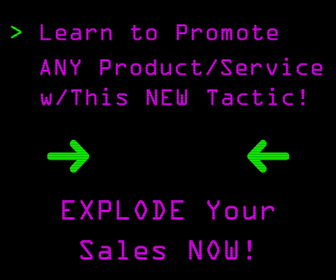You've been told it over, and over, and over again.
A million blog posts, videos, ebooks, and online courses have all chanted the same refrain in unison: “Don't let yourself get wrapped up in vanity metrics. They're totally useless and don't mean anything.”
And to some extent, that's definitely true.
A lot of numbers that look impressive on the surface don't really mean much when it comes to what really matters: sales and profits.
Clicks, impressions, followers, likes, open rates, views, and even traffic, aren't worth a thing if they don't lead to any sales.
But that doesn't mean you shouldn't give those “vanity metrics” a second look.
The thing is, despite being poor indicators when it comes to sales numbers, these kinds of metrics can actually tell you a lot about the kind of engagement your content is getting from your audience.
In a recent blog post, The Content Marketing Institute explains why vanity metrics may actually be worth a second look.
Optimization metrics, not vanity metrics
Like “clickbait,” the words “vanity metric” have earned undeserved negative connotations, making it easy for marketers to dismiss their value.
I like the term “optimization metrics” because it helps you understand their value.
The purpose of a vanity/optimization metric is to help optimize your content for your target audience on a specific channel.
When you report the number of impressions, clicks, or shares your content receives, you should NOT tie the numbers to ROI.
Instead, you should tie them to better understanding your audience on that channel. ‘
Even the same vanity metrics (“likes,” comments, and shares) will have different meanings depending on the channel.
For example, a 2017 study by Business Insider revealed that people felt safer commenting on LinkedIn than on other channels.
One likely explanation is that, unlike YouTube or Facebook, LinkedIn includes a person’s professional profile (name, place of employment, education), and thus people are more respectful and constructive when providing feedback.
It’s harder to be a troll when people know where you work.
Whereas, on YouTube, an individual can create an anonymous account and troll the comments.
As a marketer, you can judge the vanity metric of comments on LinkedIn to be more valuable to your brand’s sentiment and marketing efforts than those received on YouTube.
Alternatively, when it comes to the vanity metric of traffic, those who engage with content through Google Search are usually higher value (if your goal is transactional) than those on Instagram.
[image source: The Content Marketing Institute]
With this in mind, leverage vanity metrics to support how to improve messaging to your target audiences through A/B testing and troubleshooting.
Using vanity metrics to troubleshoot content issues
Let’s say you are running a paid campaign on Facebook and it is underperforming regarding traffic (marketing goal) and sales (business objective).
How can you use vanity metrics to solve this problem?
You know the campaign is receiving a below-average click-through rate based on:
- Number of people reached by the post (impressions)
- Number of engagements performed from the post (clicks)
[image source: The Content Marketing Institute]
First, evaluate the impressions because if you aren’t reaching the right audience, they can’t click.
You hypothesize that you are reaching the right audience but not enough of them.
Now, use that insight to increase your spend on Facebook to earn more eyeballs.
On the flip side, if impressions are abnormally high but people are not clicking on the content, you can hypothesize that you are targeting the wrong audience or your content isn’t sufficiently compelling.
Exercises like this show you how valuable vanity metrics can be to your marketing efforts.
Using vanity metrics in this manner will help improve your content on the channel and, over time, lead to higher engagement and success for your marketing goals.
You can read more about how vanity metrics can actually be surprisingly useful in the full blog post, over at The Content Marketing Institute.
CHALLENGE Yourself to Profit!
Free Download: Build Your Profit-Generating Online Business With This Free Blueprint
Sign Up, follow the easy steps and You'll get the tactics, strategies & techniques needed to create your online profit stream. It's free!





